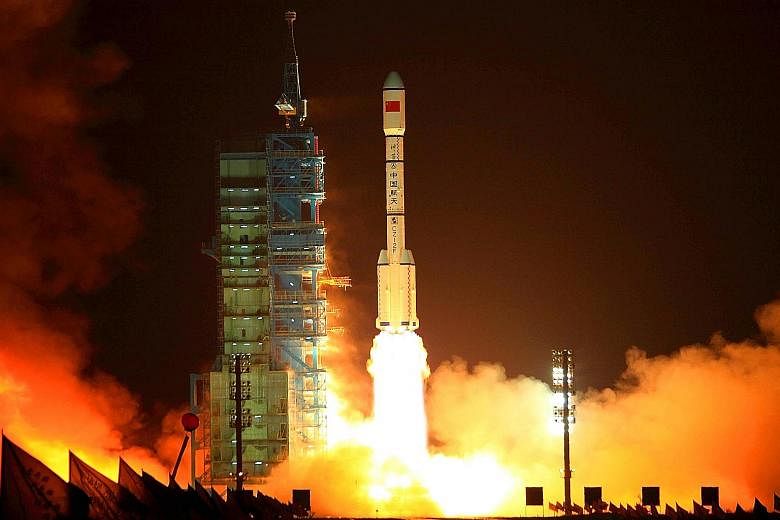BEIJING • Sometime within the next few months, the heavens will come crashing down.
Tiangong 1, which means "Heavenly Palace", is China's first space laboratory, launched in September 2011, serving as a prototype for a permanent space station that it aims to eventually build and launch.
But six years after it first went into orbit, the 8.5-tonne laboratory is soon expected to meet a fiery and uncontrolled end, hurtling down to Earth and crashing somewhere - anywhere - on the planet.
In September last year, Chinese officials confirmed that they had lost control of the space lab and that it would crash into Earth sometime in the latter half of this year. In May, China told the United Nations that the lab would re-enter Earth between October and next April.
Much of the space lab, which measures 10m in length, is expected to burn up during its re-entry. But Dr Jonathan McDowell, an astrophysicist from Harvard University, told British paper The Guardian that pieces weighing up to 100kg could make it to the Earth's surface.
Where exactly the craft will fall is anyone's guess. Even slight changes in atmospheric conditions can alter the landing site "from one continent to the next", he said.
"You really can't steer these things," he added.
"Even a couple of days before it re-enters, we probably won't know better than six or seven hours, plus or minus, when it's going to come down. Not knowing when it's going to come down translates as not knowing where it's going to come down."
Uncontrolled crashes of larger spacecraft, while rare, have happened before.
The Soviet Salyut 7 space station crashed to Earth in 1991, while Nasa's Skylab space station fell over Western Australia in 1979.
China launched Tiangong 2, its second experimental station, in September last year. China is aiming to have a permanently manned space station in orbit by 2020.
The 2011 launch of Tiangong 1 was seen by some as a "potent political symbol" that marked an important step forward in China's expanding space programme.
It was regarded as a geopolitically significant event, part of China's broader space programme through which it wants to assert its emergence as a new superpower.
Tiangong 1 ended its service in March. The odds that the crashing craft will damage aviation or ground activities are "very low", China told the UN, adding that it would closely monitor Tiangong 1's descent.
WASHINGTON POST

